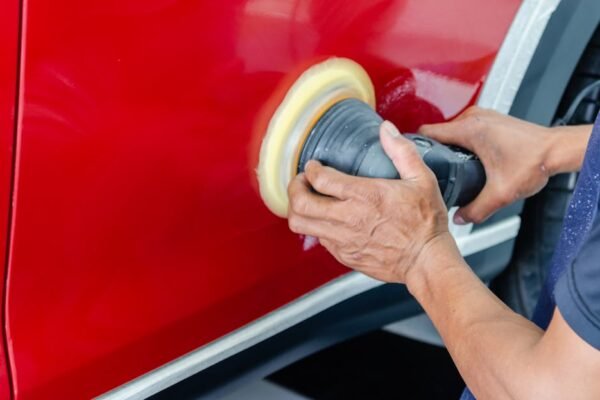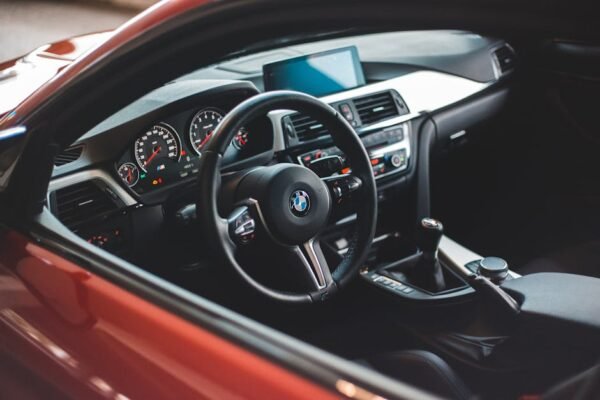Introduction to Test Driving
{“type”:”img1″,”src”:”https://mostmotors.com/wp-content/uploads/2024/03/fileUpload-95.jpg”,”alt”:”person buying first car”}Embarking on the journey to buy your first car is exciting yet daunting, especially when it comes to the test drive. This essential step is not just about seeing if you fit in the driver's seat; it's about making an informed decision on a significant investment. Understanding the vehicle's handling, comfort, features, and potential issues requires a keen eye and an attentive mind during the test drive.
First-time car buyers might feel overwhelmed by the variety of options available and the technical aspects of evaluating a vehicle. Therefore, a structured approach to your test drive can demystify the process, ensuring you make a choice that meets both your needs and budget.
This guide aims to provide first-time buyers with a comprehensive checklist to use during a test drive. By taking these steps, you'll be better equipped to judge a car's performance, safety features, and overall value.
Remember, taking your time and conducting a thorough test drive can prevent future regrets. It's about enjoying the process of finding your perfect car match, one that you'll trust and enjoy for years to come.
Let's dive into the essential checklist that will make your first car-buying experience both rewarding and enjoyable.
Before the Test Drive
Preparation is key to a successful test drive. Before even stepping foot in a dealership, there are crucial steps to follow. Research is your best tool at this stage; knowing what you want and need in a car will guide your test drive focus. Consider aspects like fuel efficiency, vehicle size, and specific features important to you.
Create a list of potential vehicles that meet your criteria and arrange test drives for each. This initial step ensures you're not wasting time on cars that don't match your needs. Additionally, familiarize yourself with basic car terminology and functions. This knowledge will be invaluable during the test drive, allowing you to ask informed questions and understand the dealer's responses.
It's also wise to bring along a friend or family member. A second opinion can offer a different perspective, possibly catching issues or highlights you might miss. Plus, it helps to have moral support during what can be a stressful process.
Finally, make sure you have all necessary documents with you. A valid driver's license is a must, and if you're considering financing options, pre-approval documents from your bank can give you an edge in negotiations.
Preparation not only makes the test drive more productive but also positions you as a serious buyer, which can be beneficial when discussing prices and options.
Exterior and Interior Inspection
Before taking the car for a spin, a thorough inspection of both the exterior and interior is crucial. Start with the exterior; check for any signs of damage, such as dents, scratches, or rust. Inspect the tires for wear and ensure they are inflated properly. It's also important to check the lights, windshield wipers, and windows to ensure everything is in working order.
Moving to the interior, assess the vehicle's cleanliness and overall condition. Comfort is key, so take your time adjusting the seats, mirrors, and steering wheel to find your optimal driving position. Test all the interior features, including the air conditioning, heater, audio system, and navigation tools (if applicable). Don't forget to check the trunk space and back seats for adequacy and functionality.
These inspections might seem minor, but they play a significant role in your comfort and satisfaction with the vehicle. It's also an opportunity to identify any potential issues that could be costly down the road.
Engaging with the car before driving it provides a solid foundation for the rest of the test drive. It's about familiarizing yourself with the vehicle, understanding its features, and ensuring it meets your aesthetic and functional needs.
During the Test Drive
{“type”:”img1″,”src”:”https://mostmotors.com/wp-content/uploads/2024/03/fileUpload-96.jpg”,”alt”:”car test drive on road”}Now comes the moment of truth: the test drive itself. This is your opportunity to evaluate how the car handles in various driving conditions. Pay attention to the engine's responsiveness, braking system, steering feel, and suspension comfort. It's important to test the car in a variety of situations, including city driving, highway speeds, and if possible, areas with hills or curves.
Listen for any unusual noises or vibrations, as these can be indicators of underlying problems. Also, assess the car's visibility and ensure you have a clear view of your surroundings from all angles. This includes checking blind spots and using the mirrors effectively.
Another crucial aspect is the transmission. Whether it's automatic or manual, the shifts should be smooth and responsive. For those considering electric or hybrid vehicles, understanding the different driving modes and recharging procedures is essential.
Lastly, always remember that comfort is crucial. The car should feel good to drive, and all controls should be within easy reach and intuitive to use. The test drive is your best chance to ensure that your potential new car aligns with your driving needs and preferences.
After the test drive, take some time to reflect on the experience. Consider all aspects of the vehicle's performance, features, and how it made you feel. This reflection is key to making an informed decision that you'll be happy with in the long term.
Post-Test Drive Considerations
After completing the test drive, there are a few final steps to take before making your decision. Discuss your impressions with the person who accompanied you on the test drive; their observations might offer valuable insights.
It's also a good time to review the car's maintenance history and any warranties it may come with. Understanding these aspects can provide peace of mind and save you from unexpected expenses in the future.
Don't hesitate to take notes during and after the test drive. These notes can be helpful when comparing multiple vehicles, allowing you to make a more informed choice. If you're still undecided, consider scheduling another test drive or trying out a different model.
Choosing your first car is a significant milestone, and the test drive is a crucial part of the process. By following this checklist, you'll be well-equipped to find a vehicle that not only meets your practical needs but also brings joy and satisfaction to your driving experience.
Remember, the right car is out there waiting for you. Take your time, conduct thorough test drives, and soon, you'll be hitting the road with confidence and excitement in your new vehicle.





